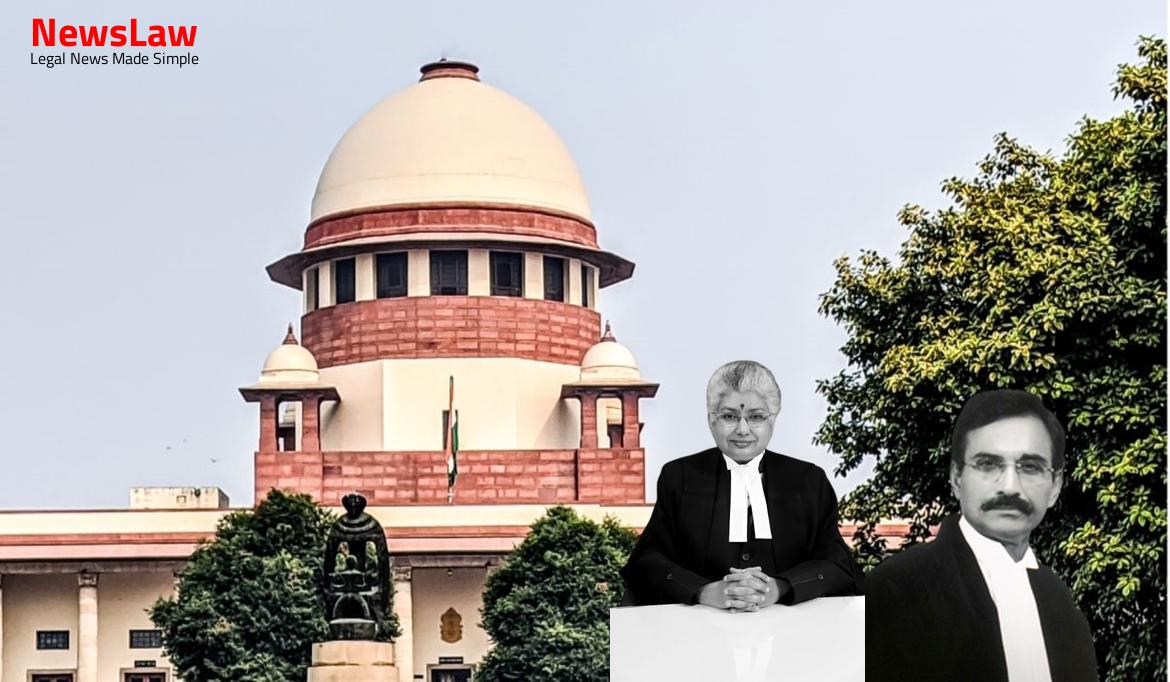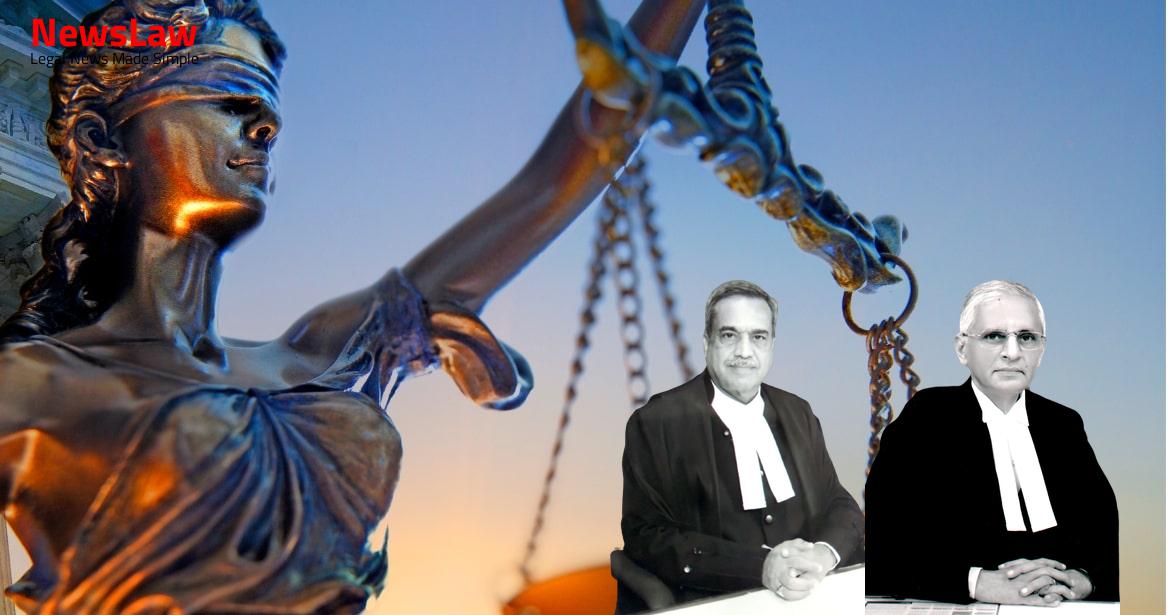P-28)
Also Read: https://newslaw.in/supreme-court/legal-analysis-of-claim-for-loss-of-profit-in-delayed-contract/
, stated that death was caused by injuries sustained by the deceased on the head.
The police registered a case under Section 302 read with 34 Indian Penal C ode (hereafter “IPC”) against all accused, based on a first information report (hereafter ‘ FIR ’) lodged by Aarti Pradhan (PW1) the deceased Vrindaw an’s daughter.
The High Court acquitted Soudagar Pradhan on both counts, but affirmed the conviction and sentence of the present appellants (A1 and A2).
Learned counsel for the appellants also argues that the death of Vrindawan took place after about 20 days of the incident on account of complication in the surgery and it cannot be said that the cause of death was injury as the prosecution could not prove that injury caused to the deceased, in ordinary course of nature, was sufficient to cause death.
It was argued that arguendo, if the prosecution could be said to have proved the attack by the appellants on the deceased, the cause of death neither being immediate nor a direct result of it, there is no question of the ingredients of the offence of murder under Section 302 IPC having been proved beyond reasonable doubt. It was submitted that the High Court erred in failing to give the benefit of doubt to the appellants, in the manner that it did to the third accused – Soudagar Pradhan. Learned counsel relied on the depositions by the two doctors and also highlighted that the victim never recovered from his injuries; he was not even in a position to record a statement. In the cross examination, the appellants could not elicit from the witness that the injury caused to the deceased in the ordinary course of nature was 7 insufficient to cause death or that the death occurred due to surgical complication and not because of injury. Learned counsel submitted that Exception 4 to Section 300 IPC is clearly not attracted in the facts of this case because the appellants had, in fact, behaved in an unusual and cruel manner and also took undue advantage of the situation because they were fully armed, and inflicted serious injuries upon the deceased, who was neither armed nor provoked them. In this case, the nature of the attack by the appellants and the quality of eyewitness testimony of prosecution witnesses, especially PW1 to PW5, cannot be doubted. The distinction between these two is 9 discernible in the manner they are defined, under Section 299 IPC and Section 300 IPC. The distinguishing feature of the mens rea requisite under clause (2) is the knowledge possessed by the offender regarding the particular victim being in such a peculiar condition or state of health that the internal harm caused to him is likely to be fatal, notwithstanding the fact that such harm would not in the ordinary way of nature be sufficient to cause death of a person in normal health or condition. If the assailant had no such knowledge about the disease or special frailty of the victim, nor an intention to cause death or bodily injury sufficient in the ordinary course of nature to cause death, the offence will not be murder, even if the injury which caused the death, was intentionally given.
12 In clause (3) of Section 300, instead of the words “likely to cause death” occurring in the corresponding clause (b) of Section 299, the words “sufficient in the ordinary course of nature” have been used. ” The court then quoted the decision in Virsa Singh (supra), and held that: “ Thus according to the rule laid down in Virsa Singh’s case (supra) even if the intention of accused was limited to the infliction of a bodily injury sufficient to cause death in the ordinary course of nature and did not extend to the intention of causing death, the offence would be murder. Such knowledge on the part of the offender must be of the highest degree of probability, the act having been committed by the offender without any excuse for incurring the risk of causing death or such injury as aforesaid.” 13 A later decision, Pulicherla Nagaraju @ Nagaraja Reddy v. The intention to cause death can be gathered generally from a combination of a few or several of the following, among other, circumstances; (i) nature of the weapon used; (ii) whether the weapon was carried by the accused or was picked up from the spot; (iii) whether the blow is aimed at a vital part of the body; (iv) the amount of force employed in causing injury; (v) whether the act was in the course of sudden quarrel or sudden fight or free for all fight; (vi) whether the incident occurs by chance or whether there was any premeditation; (vii) whether there was any prior enmity or whether the deceased was a stranger; (viii) whether there was any grave and sudden provocation, and if so, the cause for such provocation; (ix) whether it was in the heat of passion; (x) whether the person inflicting the injury has taken undue advantage or has acted in a cruel and unusual manner; (xi) whether the accused dealt a single blow or several blows. The question in cases, like the present one is, therefore, whether the injury caused due to the attack is one which falls within the description of Section 300 thirdly ( “If it is done with the intention of causing bodily injury to any person and the bodily injury intended to be inflicted is sufficient in the ordinary course of nature to cause dea th”) or if it falls within the mischief of Section 300 fourthly (“ If the person committing the act knows that it is so imminently dangerous that it must, in all probability, cause death or such bodily injury as is likely to cause death, and commits such act without any excuse for incurring the risk of causing death or such injury as aforesaid ”).
Ram Prasad, this court held that: 15 “ Although Clause fourthly is usually invoked in those cases where there is no intention to cause the death of any particular person (as the illustration shows) the Clause may on its terms be used in those cases where there is such callousness towards the result and the risk taken is such that it may be stated that the person knows that the act is likely to cause death or such bodily injury as is likely to cause death. Therefore, it is obvious that Ram Prasad must have known that he was running the risk of causing the death of Rajji or such bodily injury as was likely to cause her death. Even assuming that the Accused had no intention to cause the death of the deceased, the act of the Accused falls under Clause Fourthly of Section 300 Indian Penal Code that is the act of causing injury so imminently dangerous where it will in all probability cause death. Lastly, the doctor who conducted the post-mortem (PW-14), stated that the injuries were caused by a hard and blunt object, and death of the deceased was due to cardio respiratory failure “as a result of multiple injuries on his body and their complications”. These facts do not constitute a “sudden quarrel”, given that the appellants abused the deceased, in an unprovoked manner, and then they went to where he was, armed with axes, and assaulted him.
Again, on the question of whether the facts of this case are covered by the first exception to Section 300, i.e., that the accused/appellants did what they were accused of (which is to attack and inflict grave injuries that led to the death of Vrindawan), because of their loss of self-control, on account of a grave and sudden provocation – the answer must be the same, which is that the provision (Exception 1 to Section 300) cannot be attracted.
State of Maharashtra explained the standard of reasonableness for applying the “grave and sudden” provocation, in the following manner: “84.
The Indian law, relevant to the present enquiry, may be stated thus: (1) The test of “grave and sudden” provocation is whether a reasonable man, belonging to the same class of society as the Accused, placed in the situation in which the Accused was placed would be so provoked as to lose his self-control. It is also, likewise, not clear whether the deceased said anything to the appellants which triggered their ire, leading to loss of self-control as to result in “grave and sudden provocation”.
Case Title: PRASAD PRADHAN Vs. THE STATE OF CHHATTISGARH (2023 INSC 79)
Case Number: Crl.A. No.-002025-002025 / 2022



